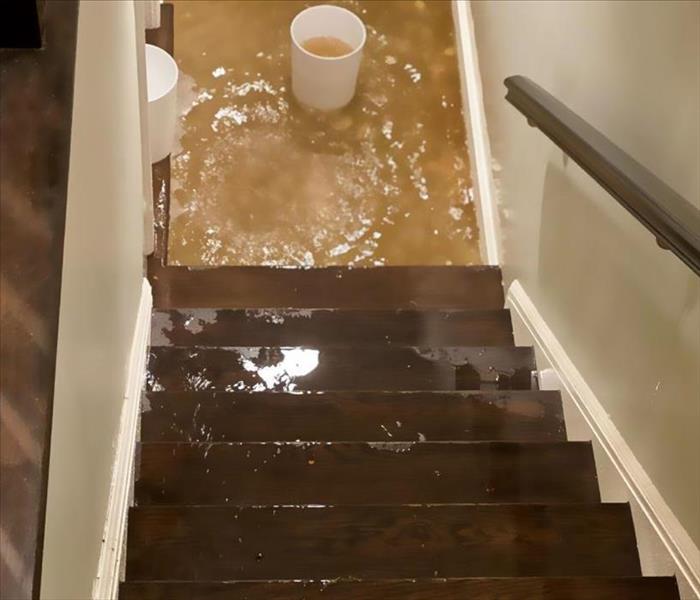Seasonal Flooding & Tips to Prevent a Flooded Basement
3/1/2022 (Permalink)
We are approaching that time of year when snow and ice melt completely from surfaces across the Commonwealth of Massachusetts. Coupled with that, snowstorms become thunderstorms, further increasing the amount of water soaking the landscape. Melting and rain showers can also increase the flow in waterways. When flooding occurs, the channel of a river or stream is filled causing water to move into the floodplain, slowing down the flow of water. As the water slows it can carry less and less material. The sand, silt, leaves, and other materials that were once carried while water was moving swiftly down the channel are dropped into the floodplain causing a slower run downstream. All of this water has to go somewhere and with high water tables it may not be absorbed into the ground before reaching your home. Now would be a good time to check your foundation for any cracks and get them sealed. Check your sub pump and perform normal maintenance to be sure it is working properly. If you do not have a sub-pump and experience regular flooding in your basement, consider installing one. Check your gutters and downspouts to be sure they are routing water effectively away from your property. Check weatherstripping and caulking around any openings in your foundation like your bulkhead or windows. Maintain grading around your home to be sure it is sloped to move water away from the property. Do not plant too close to your home as they can crack concrete and restrict drainage. Consider installing a French Drain to divert water and prevent floods. If you do experience a flooded basement give us a call right away. We have crews standing by 24/7 to respond to emergencies and mitigate damage.






 24/7 Emergency Service
24/7 Emergency Service
